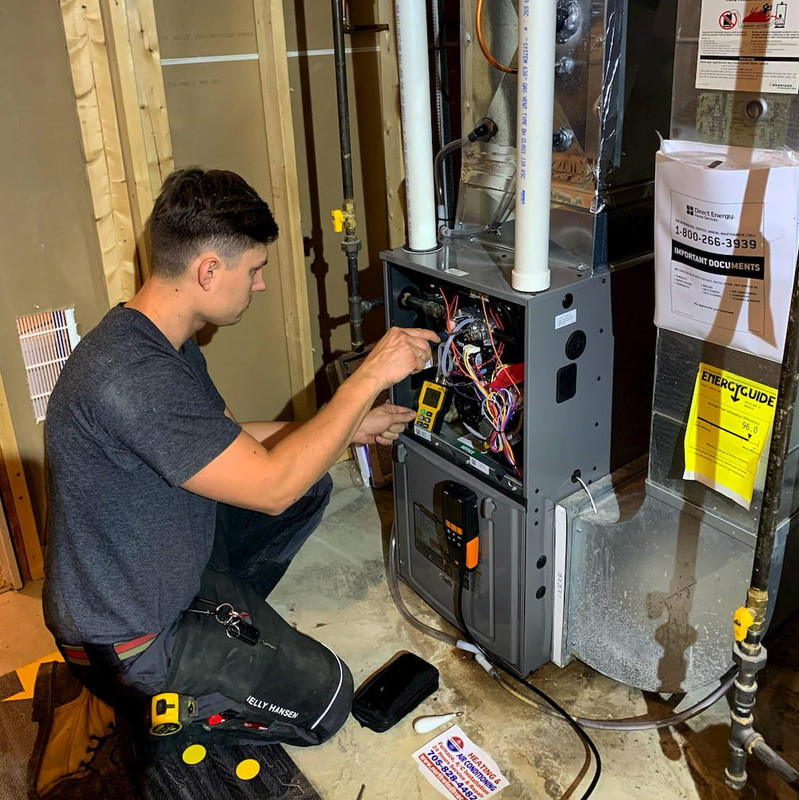
An efficient furnace plays a crucial role in keeping your home warm and relaxing throughout the winter season. But how do you know which kind of furnace is best? If you wish to change your old heating system or purchase a brand-new furnace online, this 6-step guide can assist you. Let's start with how a heater works so you can get a much better understanding of the process and your requirements.
WHAT IS A HEATING SYSTEM?
A furnace is designed to warm your house's air utilizing different kinds of fuel. It blows hot air through ducts to provide warm air via grills or air signs up. Heating systems are likewise known as a forced warm-air or ducted warm-air distribution system, and they warm a home utilizing one of these sources:
- Electricity
- Fuel oil
- Natural gas
These three sources can warm a house rapidly, and they all have their pros and cons. For example, depending on the location in which you live, one source might be less expensive than another. In general, gas is the least costly heating source.
6 ACTIONS TO PURCHASING THE BEST HEATING SYSTEM FOR YOUR HOUSE
These actions will assist you narrow the variety of heating system options. When looking for a furnace, consider these six points:
1) Climate
Depending upon your region, some heating system types work better than others. Choose a heater including an ENERGY STAR certification for the very best performance and cost savings.
Mild Climates: Most of the South, Southeast, and Southwest regions of the United States rarely experience freezing temperatures. To this end, heaters in milder areas have a "U.S. South" ENERGY STAR stamp. To fulfill the standard, gas heating units need to have a yearly fuel utilization effectiveness (AFUE) of a minimum of 80. These heating systems are created specifically for milder zones and are more effective than standard heaters. Heatpump are likewise a good option for this climate because they save on energy expenses and work best in locations where the temperature level never ever reaches listed below 40 degrees.
Cold and Freezing Climates: The rest of the U.S. needs more heating power throughout the winter. As such, furnace performance requirements in these locations will be stricter. To save on your heating costs, try to find an ENERGY STAR label for furnaces that have an AFUE score of 90 or greater.
2) Furnace Type
Gas heating systems represent the most popular type and come in three forms:
Single-Stage Gas Furnaces: A standard single-stage gas heater features a gas valve that opens and closes. The gas flows at just one rate: high. Single-stage gas furnaces operate at around 80% AFUE and are best for milder environments.
Two-Stage Gas Furnaces: A two-stage gas furnace can adjust the flow of gas from low or high for much better effectiveness. A home's thermostat communicates with the furnace to control temperature.
Modulating Gas Heating systems: This kind of gas heating system controls heat the most specifically of all the gas heater types. It is ideal for chillier environments to control space temperatures effectively and evenly.
Also offered are electric and oil heaters:
Electric Furnaces: While not as economical as gas heating systems, electric heating systems are still popular. They warm air by moving it over electrical coils and dispersing the warmed air throughout your house.
Oil Heaters: These heating systems are best for homeowners who do not have access to other types of fuels.
3) Fuel Source
Gas is the most popular fuel source since it http://edition.cnn.com/search/?text=hvac is easily offered and normally the least pricey. Gas furnaces are generally less expensive to purchase and set up, and they are less untidy than oil heaters.
If gas supply is not readily available in your area, oil is the next best choice. Lastly, electrical heaters are the least expensive to buy and install, but they do not heat big homes effectively and will cost the most to operate in electrical expenses.
4) Energy Performance
The Federal Trade Commission needs all brand-new furnaces display AFUE rankings so consumers can compare their effectiveness. The AFUE represents the annual heat output of the heating system compared to the total annual energy taken in. An AFUE of 90% means that 90% of the energy heats up the house and the other 10% escapes. AFUE does not consist of any heat lost through the duct system.
Although a high score is important, the expense of the fuel source may take away from the heating system's effectiveness. The most efficient furnace is an electric one. An electric https://furnace-repair-calgary.ca/contact-us/ heating system barely loses any energy: in fact, the AFUE ranking for an electrical furnace is 95% -100%. Regardless of the high-efficiency level, electrical power is more costly, making electric heating systems the most costly to run.
When it is time to purchase heating system online, choose a high-efficiency heating system with an AFUE of over 90% in very cold climates. In milder areas, choose one with an AFUE of 80%. The cost difference between the 2 kinds of heaters can be $1,000 or more, which may not be beneficial in a milder area.
5) Size
Setting up a properly sized heating system is the essential to heating your house. If your heating system is too small, it will not warm your whole home. A heating system that is too big will squander money on fuel by producing heat you do not require. Numerous factors determine the best size: square video, ceiling height, number of windows, and insulation. Ask an A/C contractor for an in-house assessment to determine the very best size for your house.
6) Heater Evaluations
When choosing where to buy a furnace, examine reviews through Customer Reports and the Bbb to see how customers react to issues and grievances. If you are having the heater professionally set up, inspect reviews for the HEATING AND COOLING contractor also.